SDN First Try
1.环境搭建
之前Linux课程中安装了Ubuntu虚拟机,这里就不赘述。
值得一提的是不能通过在Windows下载拖移到虚拟环境中,因为有些文件在Linux下是无法显示的。
所以就直接在Linux下安装git然后直接在GitHub上克隆过来,这个过程蛮久的。
安装完成后输入 sudo mn,提示有些包欠缺,这个时候再运行 sudo apt-get install mininet。
接着就坐等安装完成。
2.用字符命令搭建如下拓扑,要求写出命令
a.

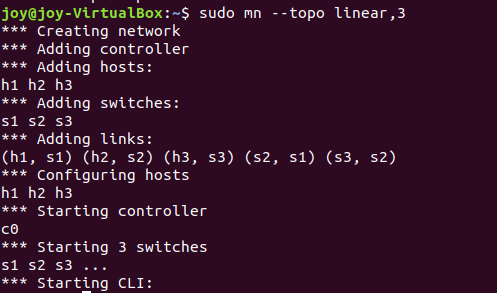


3. 利用可视化工具搭建如下拓扑,并要求支持OpenFlow 1.0 1.1 1.2 1.3,设置h1(10.0.0.10)、h2(10.0.0.11)、h3(10.0.0.12),拓扑搭建完成后使用命令验证主机ip,查看拓扑端口连接情况。
这个地方需要注意应该用sudo权限来运行miniedit.py
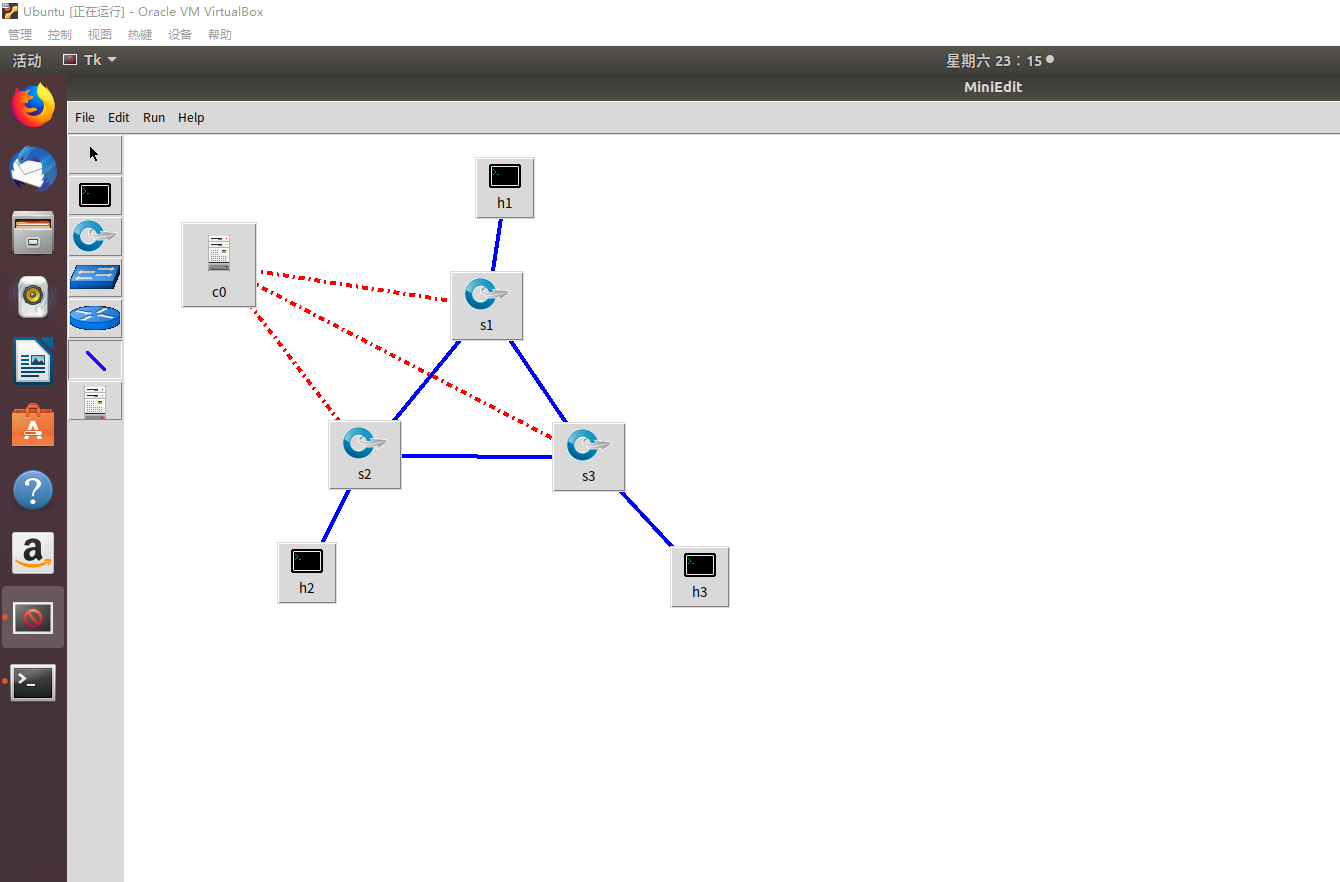
右键主机输入ip

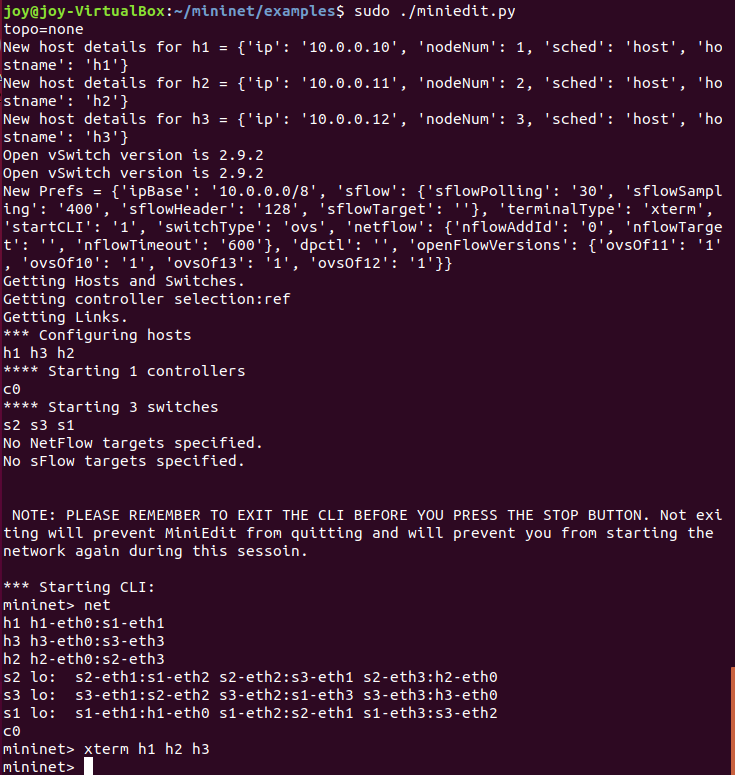
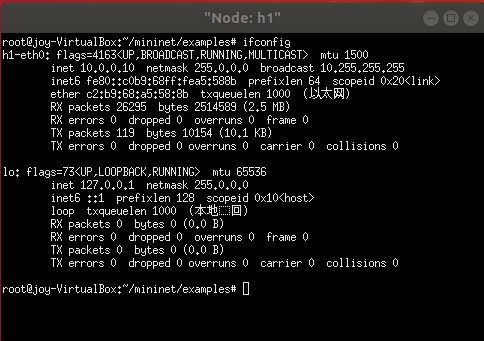
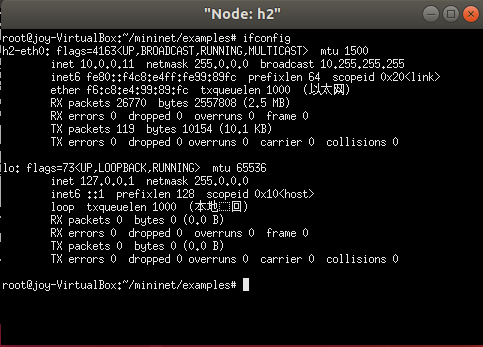
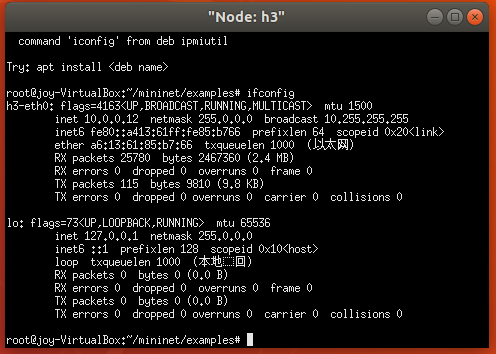
4. 利用Python脚本完成如下图所示的一个Fat-tree型的拓扑(交换机和主机名需与图中一致,即s1s6,h1h8,并且链路正确,请给出Mininet相关截图)
代码改动如下:
#!/usr/bin/python
# 创建网络拓扑
"""Custom topology example
Adding the 'topos' dict with a key/value pair to generate our newly defined
topology enables one to pass in '--topo=mytopo' from the command line.
"""
from mininet.topo import Topo
from mininet.net import Mininet
from mininet.node import RemoteController, CPULimitedHost
from mininet.link import TCLink
from mininet.util import dumpNodeConnections
class MyTopo(Topo):
"Simple topology example."
def __init__(self):
"Create custom topo."
# Initialize topology
Topo.__init__(self)
L1 = 2
L2 = L1 * 2
c = []
a = []
# add core ovs
for i in range(L1):
sw = self.addSwitch('s{}'.format(i + 1))
c.append(sw)
# add aggregation ovs
for i in range(L2):
sw = self.addSwitch('s{}'.format(L1 + i + 1))
a.append(sw)
for i in range(L1):
sw1 = c[i]
for sw2 in a[i / 2::L1 / 2]:
# self.addLink(sw2, sw1, bw=10, delay='5ms', loss=10, max_queue_size=1000, use_htb=True)
self.addLink(sw2, sw1)
# add hosts and its links with edge ovs
count = 1
for sw1 in a:
for i in range(2):
host = self.addHost('h{}'.format(count))
self.addLink(sw1, host)
count += 1
topos = {'mytopo': (lambda: MyTopo())}
运行结果:
